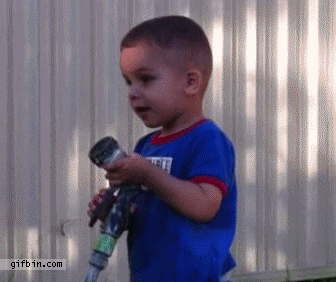This is one of my all-time favorite school-age programs. I've done it three times now over the past few years and it's always delightful.
 |
| The game Mouse Trap is a Rube Goldberg Machine |
And, even better, it doesn't take a ton of prep! I admit, it sounds intimidating, but I *promise* it's really super easy!
First off, what IS a Rube Goldberg machine? Rube Goldberg was an artist (cartoonist) who also had a degree in engineering. He is known for designing incredibly complicated machines that do a very simple task. So a Rube Goldberg machine is a really complicated way of doing something simple--many of us probably played the game Mouse Trap (or at least spent forever setting it up and trying to get it to work). You can find out more about him
here.
I usually advertise this program for kids in grades 3-6 on their own, or for families to participate together, and hold the program for an hour and a half. I invite adults dropping kids off to come back ten or fifteen minutes early, and then the whole group goes around and views all the machines and talks about what worked/what was a challenge for each machine.
Program Outline:
1. Show some examples
2. Talk about inventions. An invention is something
we create that makes life easier or to solve a problem—something no one else
thought of before. Well, a Rube Goldberg machine is a kind of invention that
actually makes things more complicated. It’s the most complicated way you can
think of to do something simple, like ring a bell. Rube Goldberg machines are
named after a real person. Rube Goldberg was an artist, and he liked the idea
of an invention that made things MORE complicated rather than easier.
Some of the STEM concepts that relate to RG machines that I focus on are chain reactions and potential versus kinetic energy.
3. Explain what the kids are going to
do:
- Tell the kids that their goal is to ring the bell by creating a chain reaction that has three or four distinct parts.
- Suggest that they start at the end and work backward. What will ring the bell? What will happen before that? What happens before that?
- Explain that paper and pencils are available at their tables if they want to create a plan before they start (I have made this optional, as well as done it where they have 5-10 minutes specifically dedicated to brainstorming. I think either way is fine).
- If you have certain limited items, let them know how much they can use (The first time I did it, I had supplies in separate categories of "only one each" and "as much as you want" but it really wasn't necessary so I haven't done that since).
While kids are building, I go around and talk to them about their
challenges, and use science words to describe what I see happening, "Oh,
I like how you're using an incline to create friction and slow down the
speed of the marble so you can control it's trajectory" kind of stuff.
When they're having a hard time, I try to refrain from telling them what
to do, but say things like, "I wonder what would happen if..." and "I
notice that it seems to get stuck at that same spot every time" and let
the kids keep figuring it out themselves (this can be hard).
Program Supplies:
Supplies vary—basically anything that you can think of;
you don’t have to know how they will use it, you just need enough stuff to
spark their imaginations and allow for variety. You don’t have to have ‘enough’
of everything except the bells since that’s the goal, and the rolling objects
that make the machine work—golf balls and/or marbles. Basically you can just raid
your supplies cabinet and put out a bunch of random stuff.
Must haves:
Scrap paper
pencils
Bells (one per kid/group; I just use the round craft bells in various sizes)
Golf balls (one per kid/group)
Marbles (Small dollar store marbles aren't heavy enough, but fine if you also have golf balls)
Dominoes (these get used a LOT, so this might be something you stock up on and/or limit)
Cardboard tubes
Cups of various sizes*
Lego*
*Even these supplies can vary;
but you do need a lot of things to provide height and structure
Also haves:
substitute whatever you have around; you just want a lot of variety, and remember: you don't need enough of everything, just a bunch of different stuff available!
Duplo
Ping pong balls
Spools
Straws
Spoons
Rubber bands
Craft sticks
Paper
Various wooden pieces from craft department—flat panels,
skewers/dowels etc.
DOES IT WORK?
Yes! You can see awesome machines created at one of my programs
here, here, and here.








